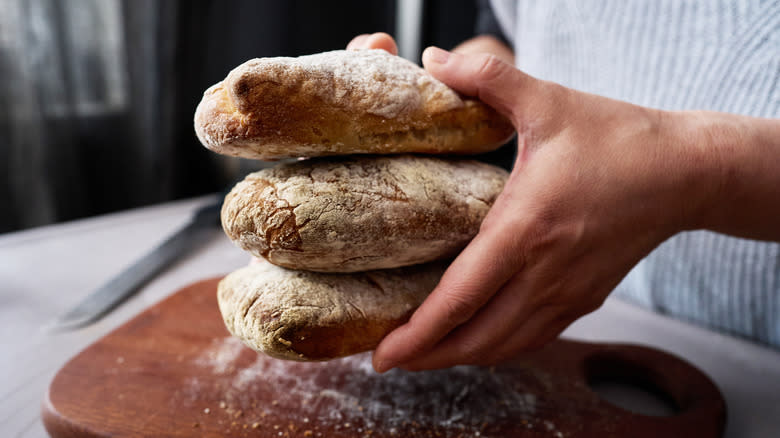janelle alberts
·2 min read
It's difficult to picture the scene in which ciabatta bread was invented. Only a few decades ago, four-time rally racing champion Arnaldo Cavallari developed a new bread recipe that eventually became ciabatta. Cavallari labored over the proofing time and hydrationfor weeks,fueled by a singular bone of contention: He'd had it with his fellow Italians going gaga for the French baguette.
The son of miller parents, Cavallari was wrapping up an illustrious racing career in the early 1980s. He returned to his hometown of Adria in northern Italy, where his family owned a flour mill. By this time, the French baguette had long gained in popularity during its century-plus lifespan, winning over bread lovers with a simple yeast, flour, water, and salt recipe. In 1982, Cavallari enlisted two flour expert bakers to join him in developing a staple Italian loaf that would give the French baguette a run for its money.
His team knew the capabilities of what flour could handle in terms of hydration, which was imperative since Cavallari's ciabatta was going to push the limits of using a very wet dough. Cavallari used olive oil to keep the dough elastic enough to stretch without tearing while delivering a chewy, open-crumb loaf of bread that immediately caught on with local restaurants and bakeries. Everyone loved it. By 1985, ciabatta loaves were selling in Marks & Spencer, and within about a decade, Ciabatta Italiana was licensed and produced in 11 countries.
Read more: 16 Little-Known Facts About Salt
What's The Difference Between Italian Ciabatta And The French Baguette
The difference between the French baguette and Italian ciabatta starts with the simple ingredients each has at its core. Both use flour, water, yeast, and salt, but ciabatta uses a much higher hydration dough andolive oil to ensure elasticity. The breads look completely different in shape and are named after the appearance of their loaves. Baguette is French for "wand" or "baton," and ciabatta is Italian for "slipper."
"Ciabatta is not an elegant slipper, but the kind of old slipper you slouch around in," Italian cookbook author Jean Salvadore told The New York Times in 1992, around the time that ciabatta bread was making its New York debut. That underscores a major difference between the breads.
Ciabatta does present like a rustic, historic bread nonetheless, and its inventor planned it that way. "It reminds people of the older breads," Arnaldo Cavallari told The Guardian, describing his loaf as the "taste of an old-fashioned bread." The texture of ciabatta is chewy yet light and fluffy, with all its extra open-crumb air holes. By contrast, a French baguette, while airy, has small holes and a crisp crust.
Read the original article on Mashed.

